Aging Eyes? Here are 5 Things to Look Out For
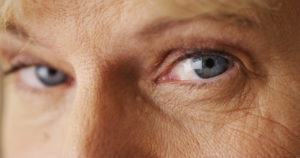
Aging is an inescapable reality for us adults. Age affects us all, and it affects every part of our bodies as well—this includes your eyes. It is easy for us to forget that our eyes are affected by age just like our skin and our hair. As we get older our eyes became more susceptible to certain eye diseases, particularly if we have other health conditions, such as diabetes.
Here are 5 Things to Look Out For as your eyes age:
- Dry eye: Dry eye is a problem that you can develop at any age, but as you get older your eyes become more susceptible to having symptoms of dry eye. Women in particular are highly susceptible to dry eye during pregnancy and menopause. Changes in your hormones affects the production of tears, which can massively affect your eye comfort. It has been found that those who suffer from dry eye, also are prone to an eyelid irritation known as blepharitis—a common cause of eyelid inflammation and irritation.
- Presbyopia: When your eyes lens becomes less flexible and makes it difficult for you to read things up close. Presbyopia has been known to start toward the end of your 30s and in your early 40s. Little known fact, Presbyopia originates from early Greek and Latin and it literally means “aging eye.”
- Age-Related Macular Degeneration (AMD): AMD targets your central vision, thus limiting your ability to read, write, and make out small details. Symptoms of AMD are generally caused by one of two things—Either the macula of your eye has begun to thin, or there is an abnormal growth of blood vessels located under your retina. If left untreated, AMD can lead to permanent blindness. Regular visits to an eye doctor are essential in catching this eye disease early.
- Glaucoma: Usually due to high ocular pressure, glaucoma is an eye disease that damages the optic nerve of your eye. The optic nerve is the part of your eye that transmits visual information to your brain to process and create vision. Peripheral vision is highly affected by glaucoma, and if left untreated you risk developing tunnel vision, or complete blindness. Glaucoma is most commonly seen in people age 55 and up. In most cases, there are no symptoms during the early stages of glaucoma, so it is a good idea to go in for regular eye screenings to ensure your eye health remains in tip top shape.
- Cataracts: Extremely common among senior citizens, cataracts are the clouding of your eyes natural lens. This occurs because the proteins in your eyes lens begin to clump together, these unwanted protein clumps are called cataracts, and they make a real mess of your vision. If you have cataracts, then performing simple daily activities will become more of a challenge. Night driving becomes increasingly more difficult because of the added glare from the cataract. Surgery is currently required to remove cataracts from your vision, but like with glaucoma, symptoms of cataracts during the early stages may not be obvious so it is recommended that you are having your eyes regularly checked with an eye doctor to detect these things as early as possible.
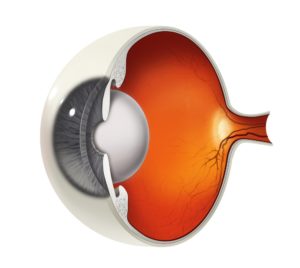
Cataracts are the number one causes of blindness in the world. The first thing you probably think of when you hear the word “cataracts” is the elderly. It is understandable why that would be the case, because cataracts are most commonly seen in the elderly, but you don’t need to be elderly to develop them—in fact, babies can be born with cataracts.
While rare, cataracts have been seen in newborns—it is estimated that between 3 and 4 children per every 10,000 are born with or will develop congenital cataracts. There are multiple causes for this, but the most common include: trauma, metabolic dysfunction, and infections developed while in utero.
In a healthy eye, light enters the eye through the cornea and passes through the lens, which then focuses the light onto the retina, which finally relays the information through your optic nerve into your brain. A cataract is the clouding of your eyes natural lens. The cataract blocks light coming into the eye thus not allowing the eyes lens to focus the light properly, which in turn causes blindness.
There are a multitude of reasons why you might develop cataracts before the age of 45. The most common reasons people develop cataracts at a younger age are: diet, medication usage, other health issues, physical trauma, and over exposure to UV rays. It is important to protect your vision, because it can be damaged easier than you think.
Detecting cataracts early in those who begin to develop them early is essential in protecting their vision for the future. If left untreated, your eyes will not develop correctly and you will have vision problems the rest of your life. Make sure to schedule regular eye exams with your eye doctor to ensure your eyes are in good health.
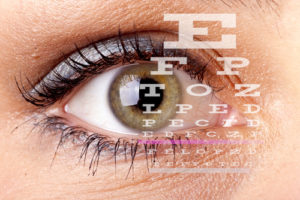
It is a well-known fact that LASIK is an optical surgery designed to permanently correct your vision. In most cases, patients who undergo LASIK experience a drastic improvement in all aspects of their vision. Here are four aspects of your vision that might see an improvement that are less well known:
- Reduced Levels of Allergic Symptoms: In some cases, patients claim to experience a lot less allergy symptoms after having LASIK. The claim to suffer from less sinus pain and fewer headaches as well due to not having to have a pair of glasses rest on their nose. Eyes are irritated less often as well due to not having to take contacts in and out of your eyes on a daily basis.
- Boosted Peripheral Vision: While your central vision is improved, the peripheral aspects of your vision also see a noticeable boost in clarity when compared to the alternative glasses. Glasses don’t wrap perfectly around the eyes, so your peripheral vision actually ends up getting distorted and is blurred.
- Better Nighttime Vision: While a small percentage of LASIK patients still experience seeing mild glare/halos after undergoing LASIK surgery, the vast majority say their nighttime vision has improved beyond anything they had experienced before. You will no longer need to deal with light reflecting off your lenses. Contacts have a habit of drying out your eyes as well, which causes you to experience fuzzy nighttime vision. Without having to deal with corrective lenses your nighttime vision is much clearer.
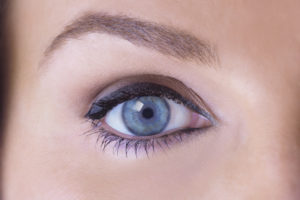
As technology advances, LASIK eye surgery is becoming increasingly more common and accessible for people who are interested in having clear vision without the use of corrective lenses. If you have yet to hear about LASIK eye surgery, it is a permanent solution to correcting your vision. Using lasers, the shape of your eye is changed so that it corrects the way light enters your eye in the same way that glasses and contacts do. If you need some help deciding if you should get LASIK here are 5 Reasons Why Having LASIK Surgery Is The Right Decision For You:
- You can actually wake up to clear vision in the morning, instead of fumbling around trying to find your glasses or get your contact lenses in. For many, this reason alone is enough to convince them to go through with the quick procedure.
- For all the fashion conscious people out there you will no longer need to worry about which outfit matches your eye wear! You are free to wear whatever you please!
- Hassle free travel! Well sure, you still have to deal with security scans and all of that, but you no longer have to worry about bringing along a backup pair of glasses or contact lenses in case something was to happen to your current set.
- You have better vision than ever before. In many cases, people who undergo LASIK come out of it with better vision than they have ever had with corrective lenses! This is due to your eye doctor being able to make tiny adjustments to your eye that are just not possible with a prescription lens.
- A nice self-esteem boost! Yes, you will no longer have to worry about what people might think about you because you wear glasses. A common phrase that gets thrown around a lot is “four eyes” and nobody enjoys being called that.
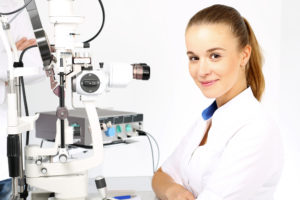
A study was recently conducted by the Refractive Surgery Alliance (RSA), that looked at Refractive Surgeons who were candidates for refractive surgery. In the study 62.6% of refractive surgeons underwent some type of laser vision correction, and 91% of study participants would recommend laser vision correction to family or a loved one!
Advancements in technology have made laser vision correction very safe, and incredibly accurate. For those considering undergoing laser vision correction themselves, it should be uplifting to know that “the people who know the most about refractive surgery are having the surgery performed on themselves and their families,” according to Guy M. Kezirian, MD, MBA, FACS, Founder of the Refractive Surgery Alliance and leader of the study in question.
Published recently in the Journal of Cataract and Refractive Surgery—the official publication of the American and European Societies of Cataract and Refractive Surgery—the study targeted 250 randomly selected ophthalmologists who have been known to perform refractive surgery. 99% of the 250 selected ophthalmologists actively participated.
The study reported that refractive surgeons are over 4 times more likely to undergo laser vision correction themselves than the general population. This could be because most people aren’t aware of all the laser vision correction options, or how safe the procedures have become. “There is a need for public education about the benefits” of laser vision correction, according to Jason P. Brinton, MD, one of the study’s authors.
Laser vision correction can improve your vision beyond what glasses and contact lens’ can provide, and can improve your quality of life. The dangers of having LASIK or some other refractive surgery are considered to be less than that of the dangers associated with continued contact lens use. The RSA considers refractive surgery a human right— “refractive errors limit safety, lifestyle, and occupational fitness. People who wear glasses are at a competitive disadvantage,” according to Richard A. Norden, MD, FACS, RSA Advisor and study co-author. “The technology is so good and the economics are so compelling that every suitable candidate should have their vision corrected.”

Just because modern medicine is becoming increasingly fantastic, doesn’t mean you should stop taking care of yourself. In fact, despite the constant advances in medical research, more and more doctors are looking at preventative medicine as a means of decreasing medical risk. Although preventative medical techniques won’t be able to stop health complications caused by genetics, age, or uncontrollable environmental factors—it can help to slow the affects.
So, what are some of these preventative medicinal techniques?
First of all, you should consider eating a healthy diet. Your eyes, much like the rest of your body, requires nutrients such as vitamins, minerals and antioxidants to function properly. Not all foods provide the right nutritional value for your eyes, so it is best to keep that in mind when going grocery shopping. Coincidentally, the best foods for your eyes tend to be ones that are brightly colored and easily noticeable from a distance such as berries, broccoli, grapefruit, carrots, and salmon. Make sure to keep a steady supply of food that has the following nutritional properties: Lutein, Zeaxanthin, Vitamin C (absorbic acid), Vitamin E, Vitamin A, Beta Carotene, Essential Fatty Acids, and Zinc.
You won’t get this nutritional value from your average processed foods, and eating an excessive amount of processed food can increase your risk of developing detrimental health conditions like diabetes, which can open up a whole new can of worms in regards to eye disease.
Wait, so I just have to eat right, and then I’m all good?
Not necessarily, and like I mentioned earlier, preventative medicinal techniques are good to practice, but they won’t ensure perfect vision forever. Just eating healthy alone won’t be enough either—here are a few more tips to help your eyes remain healthy and function at optimum levels:
- Make sure to stay hydrated – This sort of go along with eating healthy. Like a large percentage of the human body, the eyes are made up of liquid. This means that if you are suffering from dehydration, your eyes can be negatively affected. Try your best to stay on top of hydration and drink your recommended daily intake of water, and no—Soda doesn’t count.
- Wear your glasses – Don’t forget to wear your glasses! If you have a prescription, then chances are there is a reason for that. Failing to consistently wear your glasses can cause eye strain and uncomfortable headaches. Another pair of glasses that is important that you don’t need a prescription for are sunglasses. If you find yourself spending a lot of time outdoors, make sure to be wearing the proper UV protective lenses, so you don’t suffer damage due to over-exposure from the sun.
- Exercise – A big part of living healthy is maintaining a stead exercise plan helps to improve your bodies blood flow—an essential piece of the healthy vision puzzle. Strength training and cardio exercises boost your metabolism which helps prevent diabetes. You can actually exercise your eyes much like the rest of your body using proper techniques such as: Focusing on a small object and bringing it toward your nose to help boost your ability to change focus—particularly useful if you spend a lot of time in an office working in front of a computer. You can also combat eye fatigue by using a warm compress on your eyes at night before you sleep.
- Catch some Z’s – Eye strain can come from more than just staring at screens all day long, in fact, stress can cause eye discomfort and even hurt your eye health over time. If you find you are under a lot of stress, it can help your eyes and temperament to take short breaks to rest your eyes. Don’t forget to get the proper amount of sleep at night and most importantly, if you wear them, remove your contacts before going to sleep!
Living a healthy lifestyle is difficult, especially with all the delicious unhealthy foods that are so accessible on a daily basis, but is one of the best methods of protecting your eyes from eye disease and helping to ensure your vision stays healthy and clear. If you feel your eyes condition is continuing to get worse at an accelerated rate, it is best to see your eye doctor to ensure medical attention isn’t necessary.
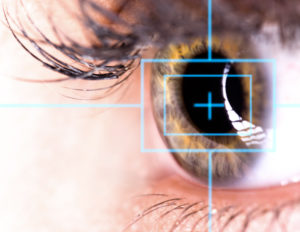
Over 9% of Americans suffer from diabetes, and approximately 1 out of 3 diabetic adults are affected by diabetic retinopathy. There are quite a few ocular complications caused by diabetes, but diabetic retinopathy is considered to be the most severe.
Here are some diabetes related ocular complications to look out for:
- Diabetic Macular Edema – Diabetes has been known to potentially cause edema, or “swelling,” of the macula. The macula is responsible for the central part of your vision, without which we be unable to make out a lot of detail. If left undiagnosed and/or untreated, diabetic macular edema could cause scarring to your macula and permanent vision loss.
- Sudden Changes in Vision – Blood glucose level fluctuations can often cause the lens inside of your eye to change, which can make your vision change exponentially. This might make you believe you need to update your eye prescription, but in all actuality it is the diabetes preventing your eyes from working properly. Having a sudden dramatic change in your vision is never good, but it can serve as the first detectable sign that you might have diabetes.
- Diabetic Retinopathy – As mentioned above, this condition is considered to be the most severe of all the diabetes related ocular complications. It affects the small blood vessels in the retina, which can lead to potential blindness or, at the very least, major vision complications if left untreated. The risk of developing diabetic retinopathy unfortunately increases the longer someone has diabetes. This risk is only worsened if the person with diabetes exercises poor blood glucose level control.
- Glaucoma and Cataracts – Diabetes raises the risk of developing glaucoma by approximately 40% and cataracts by about 60%. It is possible that diabetes might accelerate the progression of each of these conditions as well making them even more damaging for your eyes.
It is important to schedule regular eye health examinations even if eye symptoms aren’t manifesting themselves, especially if you knowingly have diabetes because of the increased risk of eye disease. It is best to catch ocular complications caused by diabetes early to halt damages to your vision as much as possible, but diabetes related ocular complications don’t always produce symptoms that are visible to you right away, making the need to be have routine eye exams with your eye doctor all the more important.
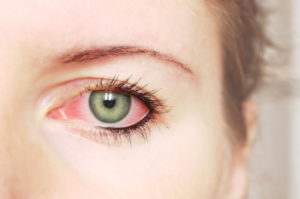
People generally describe a pterygium as a “whiteish-yellowish, wing-shaped growth” that grows over a part of your cornea, but what is it exactly? Medically speaking, a pterygium is an overgrowth of fibrovascular tissue and conjunctiva on the surface of the cornea.
In most cases, a pterygium begins as a pingueculae (try saying that ten times fast)—An elevated “whitish-yellowish growth” on the white of the eye. Pingueculae are most commonly located nasally, or temporally, on the interpalbebral fissure—located in the area between your upper and lower eyelid. A pingueculae becomes known as a pterygium when it starts to grow in a wing-like shape more centrally over the cornea.
By themselves, pterygium aren’t harmful and most commonly are caused by an over exposure to the sun, dust, or high winds. It is important to wear protective eyewear, like sunglasses, to protect your eyes when you are outside. An interesting fact—Cases involving pterygium become more common as you get closer to the equator.
Never fear though, there is medical treatments for pterygium. In fact, most commonly pterygium can be treated with lubricating eye drops or anti-inflammatory eye drops. In some cases, removing pterygium can require surgery, but this is far less common than the aforementioned removal using medical eye drops. Surgery only becomes necessary if the growth: starts inhibiting the visual axis, is unresponsive to medical eye drop treatment and becomes excessively irritating, or you begin to develop a serious astigmatism (caused by corneal surface irregularity).
Should a pterygium or pingueculea be removed using surgical methods, it should be sent to a pathologist to analyze. In rare cases, precancerous lesions can masquerade themselves as pterygium.
If you find that you are developing, or have developed, a pingueculae or pterygium make sure to have it checked out by your eye doctor so that future treatment can be planned!
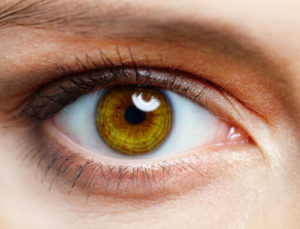
The human eye is an incredibly complex piece of biological engineering, it allows us to see by translating light into electrical signals and sending them to our brains. Due to the complexity of the human eye there are some things you might not know.
- The human eye is only second to the brain in terms of complexity. The eye is composed of over 2 million moving parts and can process 36,000 bits of information every hour.
- The cornea is the only living cell in the human eye that does not have a direct connection to a blood vessel. The reason there is no blood vessels in the cornea is that they would interfere with our ability to see.
- In terms of relative size the muscles in our eyeballs are the strongest muscles in our body. The muscles in your eye are constantly moving and readjusting, they are even moving while we sleep, as our eyes are constantly moving during the REM cycle of our sleep.
- Due to our brain doing a clever bit of piecing things together, we are unable to see that blind spot each of us have in the center of our vision. This blind spot is caused by a missing light receptor in your retina. The reason there is a missing light receptor is because the optic nerve that reaches the back of the eye, all the way to the surface of the retina, takes up space where a light receptor could be.
- Your eye is the one part of your body that doesn’t need rest to function at 100%. You should however give the external muscles of your eyes some rest to assure proper function. The same goes for your eyelids.

Recently, Avocado has grown exponentially in popularity in the culinary world. During the hot days of summer, the fresh flavors of the avocado are ideal. A staple of party food is the guacamole dip, this dip consists of mashed avocado, diced onion, tomato, and varying mixtures of seasoning—the ideal dip for crunchy tortilla chips! The avocado isn’t all flavor though, there are some real health benefits to including it in your diet, especially regarding your eyes.
The secret sauce behind avocados natural benefits for your eye health is the high levels of lutein. A single ounce of avocado contains 80 micrograms of lutein—this is 8 times more than the leading lutein vitamin supplements provide. So why should you should care about lutein? Well, that’s simple.
Lutein is believed to help maintain eye health as you age because it is a natural antioxidant. Lutein is a carotenoid that is claimed to help filter harmful blue light from your eyes. There are currently 600 different carotenoids in nature that we know about, and lutein is one of the few that supply health benefits to the retina of the eye. Due to the health benefits of lutein, avocado could potentially help prevent Age-Related Macular Degeneration (AMD)! The human body does not naturally synthesize the necessary amount of lutein it needs to help your eyes fight AMD, making it that much more important for you to consider adding avocado to your diet!
Avocado is a versatile ingredient and can be easily added to many different types of dishes: salads, salsa, soup, and sandwiches are all easy targets for some avocado. The best part about making food is being creative! So have some fun with it and try some new things!
… And don’t be afraid to share your recipe with your local eye doctor.
